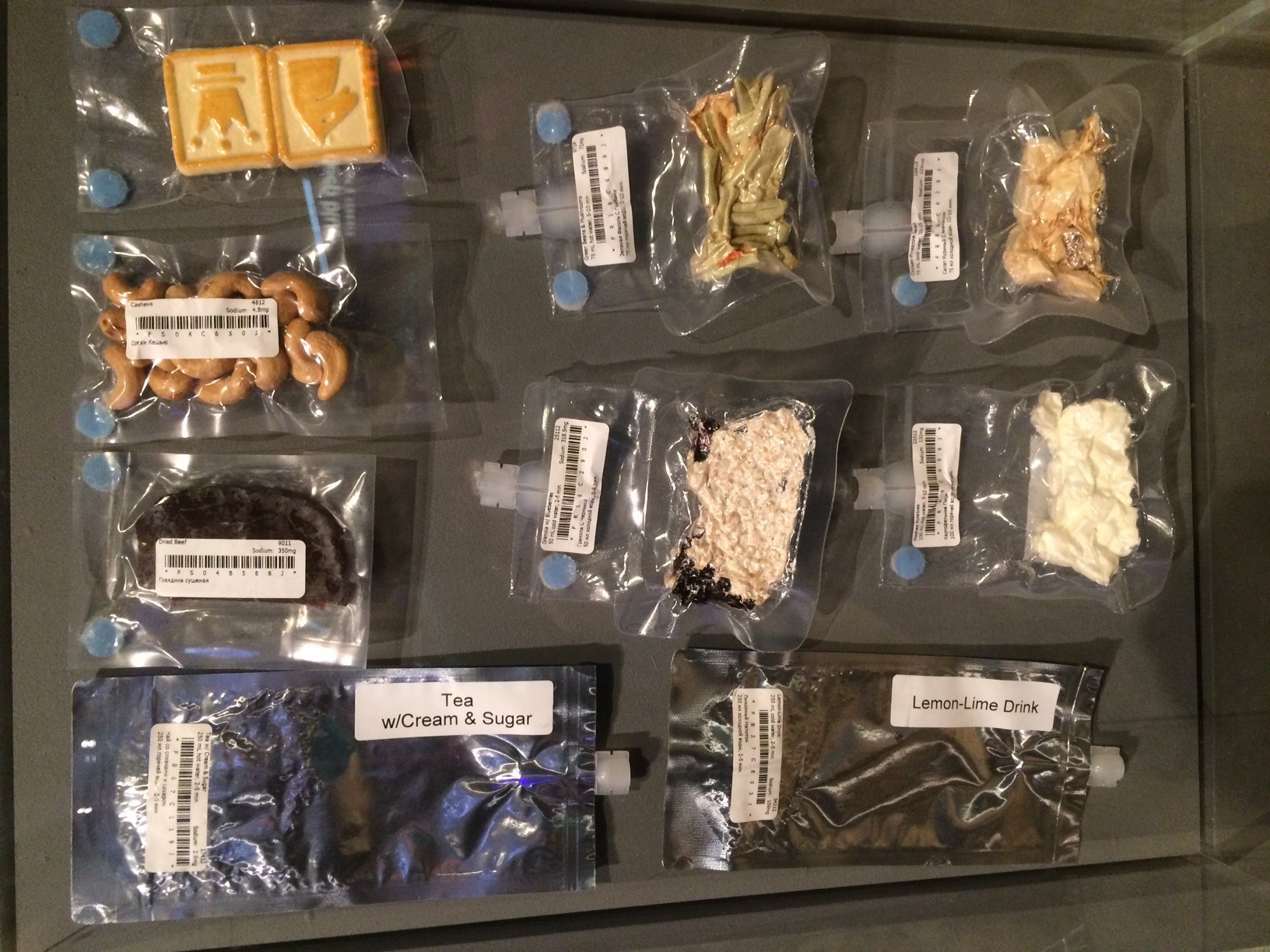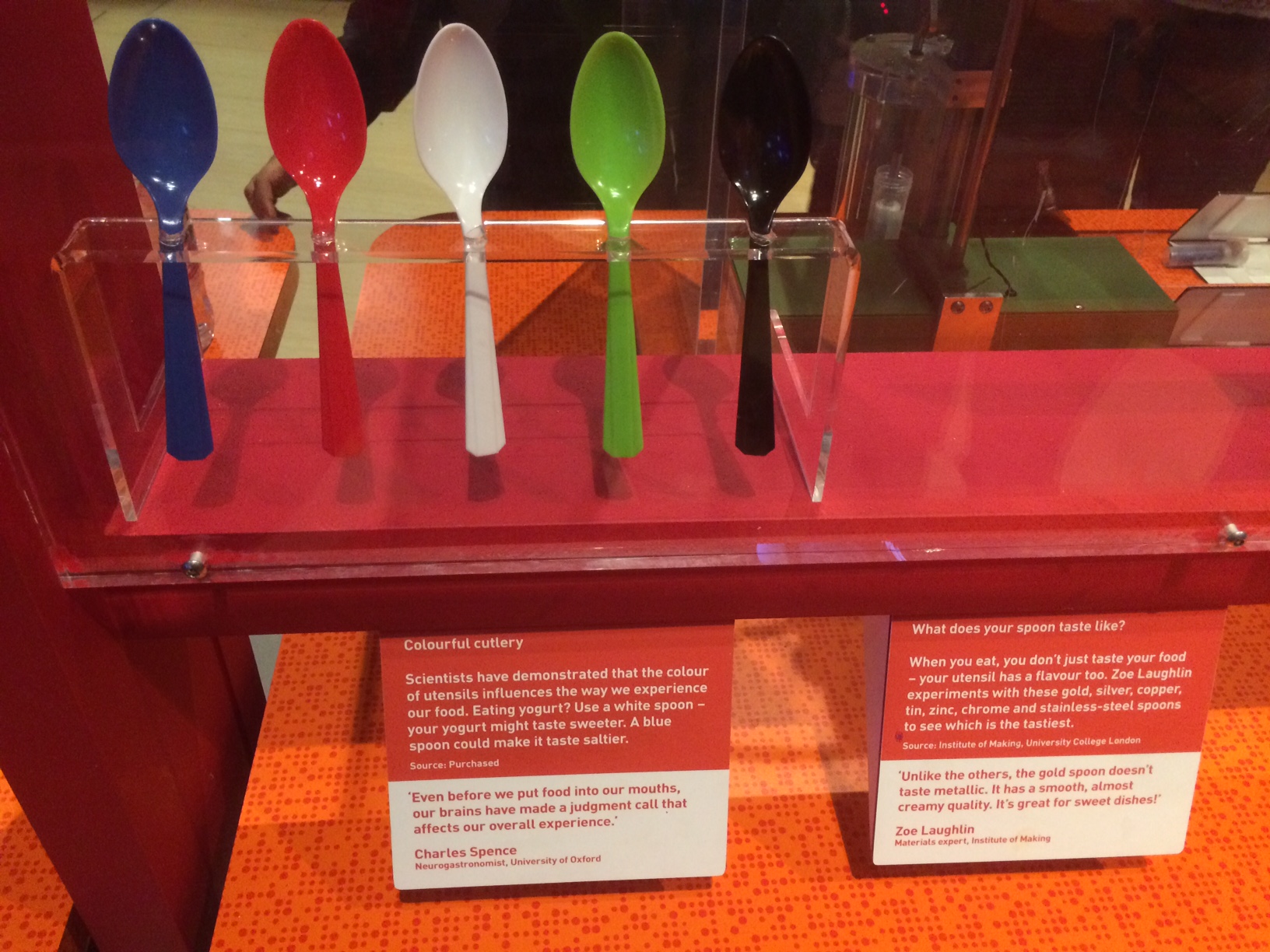We’ve been working on an auditing and reflection tool based on the science capital dimensions, to see what it could tell us about our practice. The Cravings exhibition is all about what makes us crave the foods we love, and presents scientific research about what affects those urges.
I found the tool helped me reflect on how we can make connections to visitors’ own experiences. That’s important, because the research around science capital suggests that drawing on people’s own experiences and knowledge helps make the science relevant and inclusive; if people are able to see the concepts in their own life, and even better, if there is some opportunity to talk about it with people they know, then the idea they’ve learned about becomes meaningful, not something distant and ‘other’ that exists only in the museum.
The exhibition topic is relatable because everyone has experiences of food and eating, favourite foods and weaknesses. That’s a good start. But there were a couple exhibits that triggered me to make some explicit connections to my own life…
The first was a simple display of space food, intriguing because:
- It was evocative and fun to look at: I thought ‘so that’s what space food looks like’ and I mulled over whether food sucked from a bag would taste different to plated food.
- Seeing various freeze-dried and vacuum sealed foods made me wonder what a delicious spaghetti al pomodoro (my fave dish) would look like… and how it would taste in space compared to the real, homecooked thing on Earth.

I guess I was bringing my own experiences into my understanding of the concept of space food. Just examining the food triggered that personal link for me, but I’m becoming attuned, with my ‘science capital coloured glasses’ to links between the museum content, and my own knowledge. It’s a good outcome, but it needs to be supported explicitly in our exhibits. Maybe a simple addition to the label could help get more visitors making that connection? A speech bubble on the exhibit itself: ‘What food would you want to eat if you were in space? How do you think it would taste to you if you were up there?’. Short of changing the exhibit, a facilitator (parent, or teacher) could also ask the same questions to make the connection.
The second exhibit I’ll describe, subtly encourages visitors to try an experiment at home. It was part of a display about how researchers have shown cutlery colour can affect perceptions of the taste of food. Below the different coloured spoons, the display suggests ‘…Eating yogurt? Use a white spoon – the yogurt might taste sweeter. A blue spoon could make it taste saltier.’

First of all, that was surprising. Then I thought to myself, it wouldn’t be too tricky to get a few different spoons and try a similar experiment at home- sampling yogurt and comparing- an easy way to carry the museum experience over into my home life. If I tried it whilst sitting with friends or family, it could lead to some interesting discussion. And it would be an example of two different dimensions of science capital in practice because I’d be:
- Doing science related activities at home
- Talking about science with others
I liked the subtle, non-intimidating language the label used to encourage the experiment. Would every visitor feel inspired to try it out? Probably not. Do we think the exhibit needed to be more explicit, eg using a prompt or incentive to try out the experiment? Eg ‘amaze your friends with this.’
Not necessarily. Someone who is used to tinkering at home might have thought of trying the experiment out, but someone who doesn’t often do science related things at home would not. But the question is phrased in a way that embeds the principle into everyday life, even if you didn’t actually try it. It highlights that it’s a real effect that could impact how you taste your food.
These two exhibits really got me thinking about how we can be better at making personal links and leveraging anyone’s existing knowledge. The key here is trying to help all our visitors make those links, not just the ones who are at ease with science related activities and ideas. And when you think of how many exhibits an average visitor sees during their visit, and how much they actually miss, it really does highlight the importance of trying to include relatable, inclusive and motivating approaches wherever possible, to maximise their exposure to experiences that could help support their science capital.
Have you found a way to make personal links to your visitors, while avoiding being patronising or intimidating?